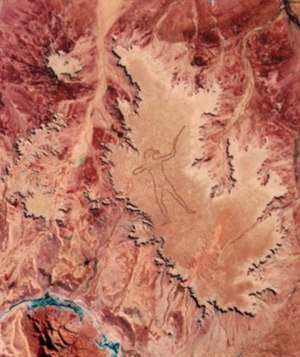Marree
Marree is a tiny little town in the South Australian outback. Founded in the mid-1800s when springs were discovered in the area, it boomed with the introduction of the railway in 1883. Cattle were droved to the town to be loaded on the train and transported to the coast in Adelaide. The famous passenger train The Ghan also stopped in the town on its journey to Alice Springs. After considerable decline, a new direct railway was eventually built far to the west and Marree largely fell off the map.

Marree was also home to Australia's first mosque, built by the large number of Afghan cameleers employed in the area. At one time, the town was divided in half, with white Europeans on one side, and the poorer Aboriginals and Afghans on the other.
Today, with a population of only 70, the town is a ghost of its former self. It is home to a significant number of Indigenous Australians, making it an interesting experience for anyone who cares to visit.
Get in
The town sits at the T-intersection of two roads (or rather, tracks). The Birdsville Track ends in the town, entering from the north-east and travelling all the way to Birdsville in Queensland. The Oodnadatta Track passes through the centre of the town. It is the most common method of entry, with a paved highway leading all the way south to Adelaide. You can also enter from the east towards Oodnadatta.
Additionally, the town has a small airport, but it is mostly used for charter flights to view local landmarks such as Lake Eyre and the Marree Man.
Get around
See

- Arabunna Community Centre. A good introduction to the local Indigenous culture.
- Marree Mosque. A 2003 recreation of an original mud-brick mosque built around 1882 by Afghan camel herders. It has the title of being Australia's first, and is still utilised by a tiny Afghan community that still lives in the area to this day.
- Marree Man. While not actually in the town, this geoglyph put the town on the map for some time. Discovered in 1998, this 4.2km tall man was etched into the desert sand presumably only a few years prior. It's creator remains a mystery, but clues later pointed to it being funded by Americans. Some view it as a landmark to the Aboriginal culture and the outback, while others call it 'environmental vandalism'. Either way, it is a sight worth seeing if you can afford the charter plane that will take you to see it.
Do
Buy
Eat
Drink
Sleep
Connect
Go next
| Routes through Marree |
| END ← | W |
→ William Creek → Marla |